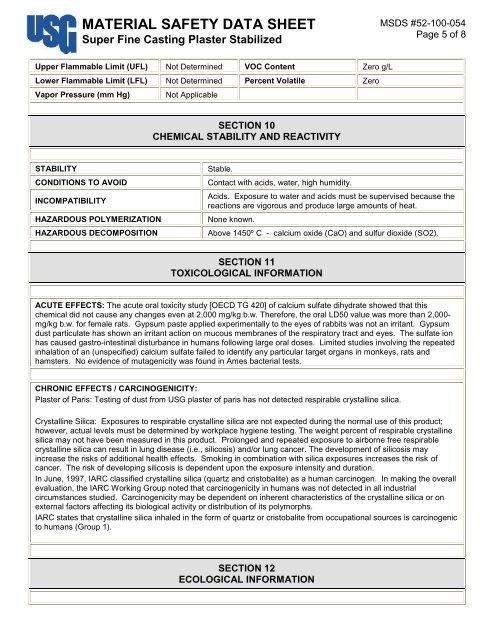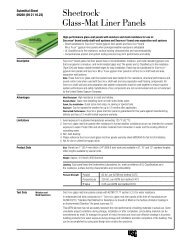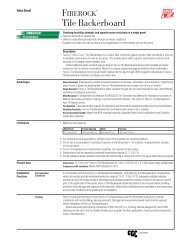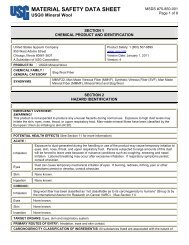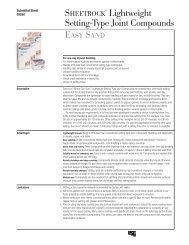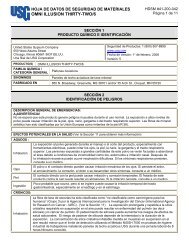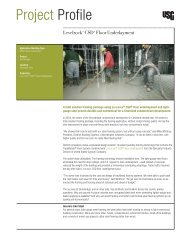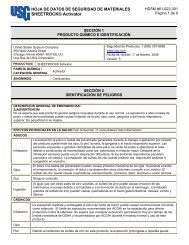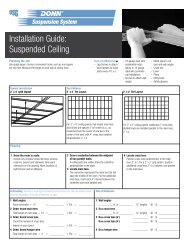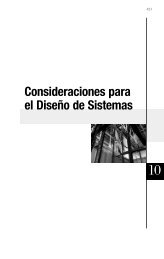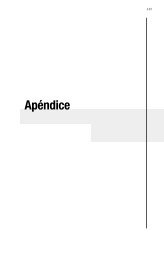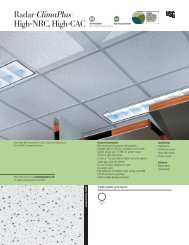MATERIAL SAFETY DATA SHEET - USG Corporation
MATERIAL SAFETY DATA SHEET - USG Corporation
MATERIAL SAFETY DATA SHEET - USG Corporation
Create successful ePaper yourself
Turn your PDF publications into a flip-book with our unique Google optimized e-Paper software.
<strong>MATERIAL</strong> <strong>SAFETY</strong> <strong>DATA</strong> <strong>SHEET</strong><br />
Super Fine Casting Plaster Stabilized<br />
Upper Flammable Limit (UFL) Not Determined VOC Content Zero g/L<br />
Lower Flammable Limit (LFL) Not Determined Percent Volatile Zero<br />
Vapor Pressure (mm Hg) Not Applicable<br />
STABILITY Stable.<br />
SECTION 10<br />
CHEMICAL STABILITY AND REACTIVITY<br />
CONDITIONS TO AVOID Contact with acids, water, high humidity.<br />
INCOMPATIBILITY<br />
HAZARDOUS POLYMERIZATION None known.<br />
MSDS #52-100-054<br />
Page 5 of 8<br />
Acids. Exposure to water and acids must be supervised because the<br />
reactions are vigorous and produce large amounts of heat.<br />
HAZARDOUS DECOMPOSITION Above 1450º C - calcium oxide (CaO) and sulfur dioxide (SO2).<br />
SECTION 11<br />
TOXICOLOGICAL INFORMATION<br />
ACUTE EFFECTS: The acute oral toxicity study [OECD TG 420] of calcium sulfate dihydrate showed that this<br />
chemical did not cause any changes even at 2,000 mg/kg b.w. Therefore, the oral LD50 value was more than 2,000mg/kg<br />
b.w. for female rats. Gypsum paste applied experimentally to the eyes of rabbits was not an irritant. Gypsum<br />
dust particulate has shown an irritant action on mucous membranes of the respiratory tract and eyes. The sulfate ion<br />
has caused gastro-intestinal disturbance in humans following large oral doses. Limited studies involving the repeated<br />
inhalation of an (unspecified) calcium sulfate failed to identify any particular target organs in monkeys, rats and<br />
hamsters. No evidence of mutagenicity was found in Ames bacterial tests.<br />
CHRONIC EFFECTS / CARCINOGENICITY:<br />
Plaster of Paris: Testing of dust from <strong>USG</strong> plaster of paris has not detected respirable crystalline silica.<br />
Crystalline Silica: Exposures to respirable crystalline silica are not expected during the normal use of this product;<br />
however, actual levels must be determined by workplace hygiene testing. The weight percent of respirable crystalline<br />
silica may not have been measured in this product. Prolonged and repeated exposure to airborne free respirable<br />
crystalline silica can result in lung disease (i.e., silicosis) and/or lung cancer. The development of silicosis may<br />
increase the risks of additional health effects. Smoking in combination with silica exposures increases the risk of<br />
cancer. The risk of developing silicosis is dependent upon the exposure intensity and duration.<br />
In June, 1997, IARC classified crystalline silica (quartz and cristobalite) as a human carcinogen. In making the overall<br />
evaluation, the IARC Working Group noted that carcinogenicity in humans was not detected in all industrial<br />
circumstances studied. Carcinogenicity may be dependent on inherent characteristics of the crystalline silica or on<br />
external factors affecting its biological activity or distribution of its polymorphs.<br />
IARC states that crystalline silica inhaled in the form of quartz or cristobalite from occupational sources is carcinogenic<br />
to humans (Group 1).<br />
SECTION 12<br />
ECOLOGICAL INFORMATION


